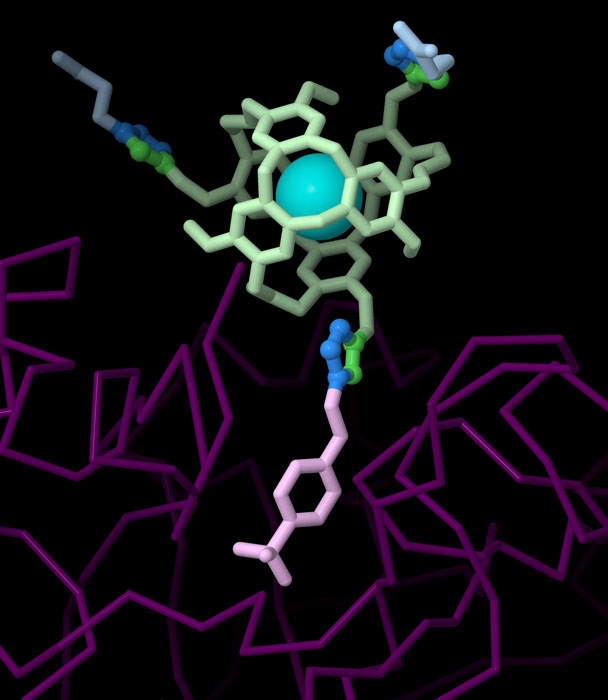Structural Biology and Nobel Prizes
12/08
PDB structures help us understand these discoveries. Visit PDB-101 to learn more about Click Chemistry.
 Click Chemistry has become a central tool in the synthetic chemistry toolbox. It is widely used for combinatorial chemistry, where many modular components are connected in multiple configurations and all rapidly tested for potency. It is also being used in a targeted way, allowing researchers to make their molecular dreams a reality. The molecule shown here (PDB ID 3cyu) is designed to be a biosensor. The spherical cryptophane at the top, which has the alkyne half of the click reaction, traps a xenon atom that may be useful as a contrast agent for MRI. The azide portion shown at the bottom is a molecule that binds specifically to the target enzyme: carbonic anhydrase II.
Click Chemistry has become a central tool in the synthetic chemistry toolbox. It is widely used for combinatorial chemistry, where many modular components are connected in multiple configurations and all rapidly tested for potency. It is also being used in a targeted way, allowing researchers to make their molecular dreams a reality. The molecule shown here (PDB ID 3cyu) is designed to be a biosensor. The spherical cryptophane at the top, which has the alkyne half of the click reaction, traps a xenon atom that may be useful as a contrast agent for MRI. The azide portion shown at the bottom is a molecule that binds specifically to the target enzyme: carbonic anhydrase II.Browse PDB-101 to explore articles and resources that highlight many of the PDB structures and related experimental techniques associated with Nobel Prizes, including a timeline of awards made in Chemistry, Physiology or Medicine, and Physics and corresponding Molecule of the Month articles.
Past news and events have been reported at the RCSB PDB website and past Newsletters.



